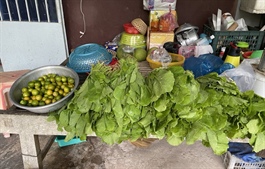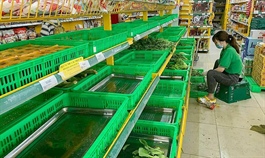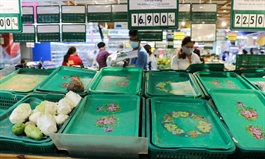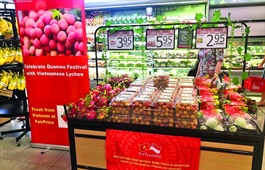Domestic retailers to cement dominant position in Vietnam
Domestic retailers to cement dominant position in Vietnam
Local businesses have promptly applied omni-channels to adapt to the new normal situation.
The increasing presence of foreign brands in Vietnam has been seen a push for domestic retailers to participate in the race for market share and keep their leading position in the market as the country remains one of the most promising markets in the world, especially its effective results in containing the Covid-19 outbreak and support policies for businesses.
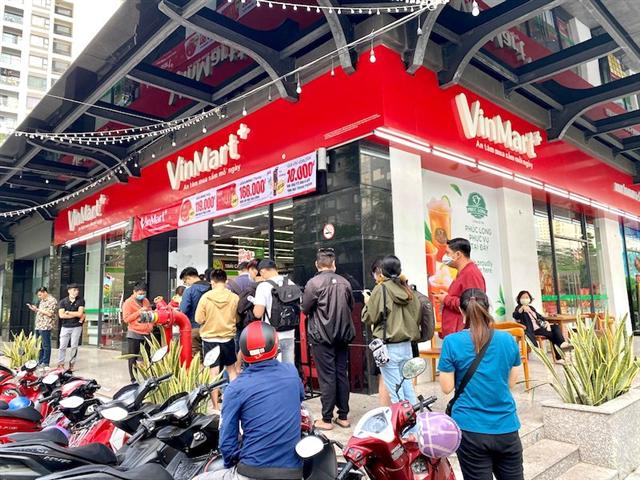
VinMart and VinMart+ retail and agricultural chains VinEco are expected to open another 300-500 outlets by year-end. Photo: Masan Group
|

Clean seafood products are sold in Soi Bien outlet in Hanoi. Photo: Soi Bien
|
The BRGMart chain managed by Hanoi-based BRG Retail has continuously opened new stores from 2020 to 2021, expanding its network to up to 75 supermarkets and minimarts, Nguyen Thai Dung, Chairman of BRG Retail told The Hanoi Times.
“We will open up to 100 supermarkets and minimarts in Hanoi, Hai Phong, Hai Duong, Hung Yen, Ba Ria-Vung Tau, and Ho Chi Minh City by the end of this year,” Dung added.
According to the Ministry of Industry and Trade, Vietnamese enterprises are now accounting for 80% of a total number of nearly 1,100 supermarkets, 240 shopping centers, and nearly 2,000 convenience stores across the country.
Over the past years, domestic players have rapidly expanded their scale to capture market share through merger & acquisition (M&A) deals. This has significantly changed the landscape of the retail industry in recent years, local insiders said.
Vu Thi Hau, Chairwoman of the Vietnam Retailers Association (VRA) underlined Vietnamese retailers are growing stronger than previously.
“They are aware how to take advantage of the home field to leverage their development, typically through M&A deals with the desire to expand their market share in the domestic ground,” she told The Hanoi Times. “It proves the Vietnamese retailers are completely capable to dominate the market.”
Local insiders commented the firms have taken advantage of understanding the local market, consumer habits as well as effectively focused on customization and localization strategies.
Adaptation and dominance
Covid-19 has created more momentum for the shift from traditional trade to e-commerce, Hoang Quang Phong, Vice President of the Vietnam Chamber of Commerce and Industry told the online conference entitled “Digital transformation-Solution to boost retail growth” last month. Impacts from the pandemic including travel restriction have aggressively boosted online shopping.

Bach Hoa Xanh chain's shippers serve online shopping. Photo: MoMo
|
Local retailers have promptly turned their business strategies to developing omni-channels to adapt to the new normal situation.
Soi Bien chain has put into use the “All-in-one” payment solution with high security. The solution helps employees both sell goods, manage orders, make payments, control the status of goods and manage revenue. “We are preparing to sell on e-commerce platforms in the coming time,” Bui Van Hau, Managing Director of Hanoi-based Soi Bien food chains told The Hanoi Times.
BRG Retail, last year, also launched its app BRG Shopping as well as enhanced cashless payment to create convenience to customers. “Training human resources, applying new technology and caring customers are a priority of the chain, in parallel with outlet expansion,” Dung said.
Dang Thanh Phong, PR Manager of MobileWorld JSC (MWG), one of the pioneering retailers applying omni-channels successfully, saw the Vietnamese retailers have improved their weakness of capital and technology application compared to the previous years. The retailer owns a huge number of outlets at thegioididong.vn (mobile devices chain), Dien may Xanh (electronic products chain), and Bach Hoa Xanh (grocery chain) across the country and in overseas markets.
“They are both actively and strongly investing in applying technology into the management of chains, invention, and customer care. It is key factors to help them accelerate their capacity as well as competitiveness in the tougher competition," he told The Hanoi Times.
Hau from the VRA commented that the Vietnamese retailers have emerged from their weaknesses which were capital shortage and backward technology application in the previous years. Enterprise’s strategy must always be associated with the development of the market. Meeting the needs of consumers helps businesses survive. “So it is not surprising that retailers have to change to adapt," she added.
Meanwhile, the $1 billion plan of Central Retail is to focus on developing the multi-sectoral platform to improve customer experience, branding for non-food categories as well as enhancing its presence in urban and rural areas to strengthen its dominance in Vietnam.
Philippe Broianigo, CEO of Central Retail in Vietnam, said they will develop the omni-channel including nguyenkim.com and supersports.com.vn, build e-commerce stores on Lazada, Shopee, and Tiki and cooperate with food apps such as Grab, Now, Beamin, and Chopp.
Local insiders predicted the population scale of Vietnam will increase by 2% per year, and reach 106 million people by 2050, which will be a good sign for retailers. Looking at the potentials of the retail market, they said Vietnam is a “promising land” for domestic firms, and also an ideal destination for foreign businesses.





